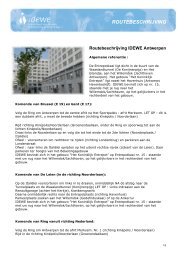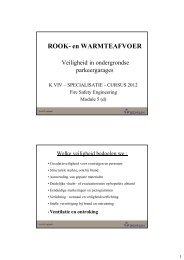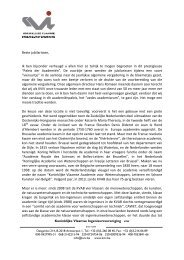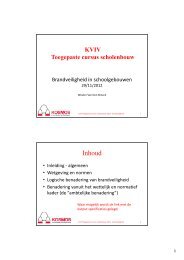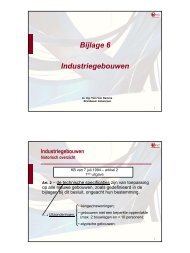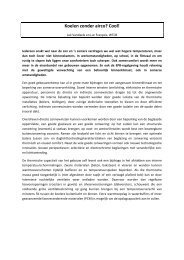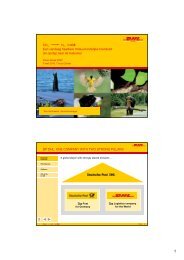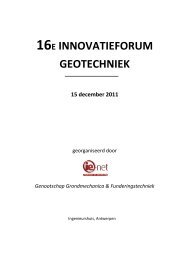Schoonbaert volledig - ie-net
Schoonbaert volledig - ie-net
Schoonbaert volledig - ie-net
Create successful ePaper yourself
Turn your PDF publications into a flip-book with our unique Google optimized e-Paper software.
An Updated International Survey ofComputer Models 93<br />
Model Country<br />
Table 1. Continued.<br />
Identifying<br />
Reference Description<br />
IMFE POLAND [29] Single compartment zone model<br />
with vents<br />
MAGIC FRANCE [30] Two-zone model for nuclear power<br />
stations<br />
MRFC GERMANY [31] Multiroom zone model for<br />
calculation of smoke movement<br />
and temperature load on structures<br />
NAT FRANCE [32] Single compartment zone model with<br />
attention to response of structures<br />
NBS US [112] Preflashover zone model<br />
NRCC1 CANADA [33] Single compartment zone model<br />
NRCC2 CANADA [34] Large office space zone model<br />
OSU US [35] Single compartment zone model<br />
Ozone BELGIUM [36] Zone model with attention to<br />
response of structures<br />
POGAR RUSSIA [37] Single compartment zone model<br />
RADISM UK [38] Zone model incorporating an<br />
immersed ceiling jet within the<br />
buoyant layer, sprinklers, and vents<br />
RFIRES US [115] Preflashover zone model<br />
R-VENT NORWAY [39] Single room smoke ventilation<br />
zone model<br />
SFIRE-4 SWEDEN [40] Postflashover zone model<br />
SICOM FRANCE [41] Single compartment zone model<br />
SMKFLW JAPAN [42] One-layer zone model for smoke<br />
transport in buildings<br />
SmokePro AUSTRALIA [122] Single compartment smoke layer<br />
interface position zone model<br />
SP UK [114] Preflashover zone model<br />
WPI-2 US [43] Single compartment zone model<br />
WPIFIRE US [124] Mufti-room zone model<br />
ZMFE POLAND [29] Single compartment zone model<br />
These models have been identif<strong>ie</strong>d by the authors, but no references or survey information was<br />
provided: CISNV (Russia), Firepro (UK), FLAMES (France).<br />
thermal elements in the detectors to the heat and flow f<strong>ie</strong>ld. The inputs to<br />
the submodels are usually the characteristics of the thermal element (such<br />
as RTI and activation temperature), location of the thermal element, and<br />
the heat release rate of the fire. For some of the more sophisticated detection<br />
zone models, details such as compartment geometry and building material<br />
characteristics are required.<br />
The model then uses simplif<strong>ie</strong>d modeling of the fire and calculates the<br />
heat transfer at the thermal element to determine the time to activation.




